Health: 10 Tips for Dining at Indian Restaurants
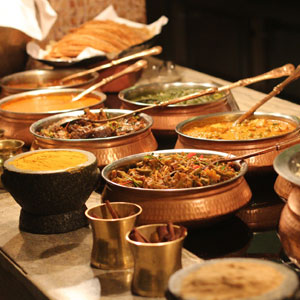
Let’s face it—dining out is a modern indulgence that we all enjoy. But now that we are all health conscious, it can also be a major guilt inducing decision. Here are ways to make it less so, while not sucking out all the joy from it.
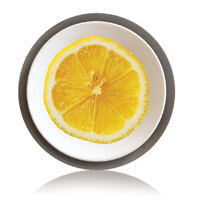
1. Pair water with vitamin C. The first dilemma you face comes as soon as you get comfortable on your seats at the restaurants. Sure, that Coke may seem tempting, but think about all the calories and sugar that you will be consuming in the rest of your meal tonight. Sugar sweetened beverages are empty calories that convert to fat and lead to weight gain. And diet drinks are suspected of leading to heart and kidney problems, diabetes and depression, and even weight gain. Instead, you could choose water, paired with vitamin C. The benefit? It improves absorption of iron from foods such as meats, spinach, or lentils. You can “spike” your water with vitamin C either by bringing it with you as a powdered supplement, or by squeezing a wedge of lemon in it.
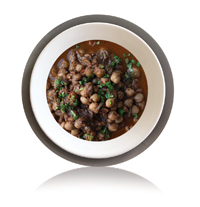
2. Choose a plant-based protein dish. Chickpeas, daal, and moong, for example, contain both protein and fiber which help with feeling full, discouraging overeating of simple carbohydrates such as processed white rice and roti. Adequate fiber intake is key for regular bowel movements and preventing constipation.
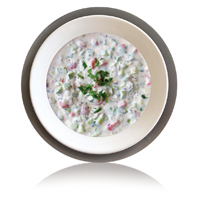
3. Don’t skip the side salad or cucumber raita. At a restaurant, ask for raita or side salad without salt, and ask for lemon juice and ground black pepper to add when the salad arrives (since they aid in digestion). Salads are low-calorie, nutrient-packed tummy fillers.
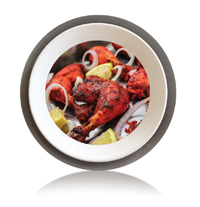
4. Try tandoori or grilled items. Choosing tandoori or grilled items will prevent you from consuming high fat-filled curries or fried appetizers such as samosas, pakoras, or spring rolls.
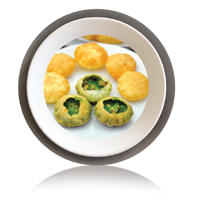
5. Fried can be your friend—only if you watch your portions. Okay, can’t say no to those samosas, pakoras, or spring rolls? How about eating just one of them, instead of three or four? Remember, there are other yummy items on the menu that can be healthier. Choose pani puri instead as it contains mint water, tamarind chutney, and chickpeas. Loads of nutrients with some fried puris is absolutely okay! Or choose idli or dosa as they are fermented and provide health benefits.
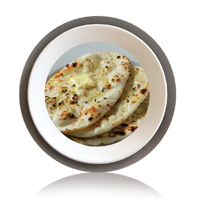
6. Opt for tandoori roti without ghee or butter since both are saturated fats. Because the South Asian lifestyle in America is more sedentary than ever before, the fat we eat is stored rather than utilized, so we tend to collect belly fat—a primary risk factor for diabetes.

7. What about alcohol? Limit to one drink. Alcohol contains empty calories and makes metabolism slow. For example, 12 oz. of beer has 153 calories, and 5 oz. of wine has 125. Imagine you eat a meal high in simple carbohydrates and saturated fats at dinner and go home with a sluggish metabolism. What happens to all the calories? They turn into fat and result in weight gain!
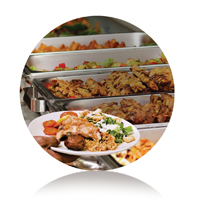
8. Avoid the buffet. Just because a restaurant offers a buffet, it does not mean that’s the only choice. You can still order from the menu. A buffet will almost always tempt you to try out a whole number of different offerings, and go in for seconds and even thirds. Even at the end, you will end up indulging in the desserts— bloated stomach or not. “I have paid for it, after all,” the mind will rationalize! Instead, if you order from the menu, you can choose healthy dishes and enjoy without jeopardizing your health and weight.
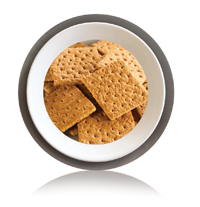
9. Don’t go out to dinner starving. Just eat a little healthy snack like 8-10 almonds, 4-5 whole wheat, low sodium crackers, or half an apple just to keep you satiated until your meal. From the time you leave the house until your meal arrives, it can be an hour or much more. A healthy snack prevents you from overeating later and keeps your blood sugars from spiking!
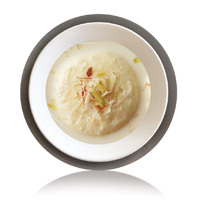
10. Eat mindfully. Ask yourself half way through the meal to see if you’ve had enough. It takes your brain about 20 minutes to register fullness. Often, in a restaurant, you may be full but not satisfied as everything tastes really delicious, which can lead to mindless eating. Eating mindfully, for example, will have you keep some room in your stomach for dessert—which you can share, or ask for a container to take half home. Mindful eating teaches you that food is enjoyable when not overindulged.
Jenifer Tharani, MS, RD, LD is a registered and licensed dietitian nutritionist with training from Emory University Hospital. The main focus of her nutrition consulting practice is working with South Asians to prevent and manage diabetes, high blood pressure, and obesity.
Enjoyed reading Khabar magazine? Subscribe to Khabar and get a full digital copy of this Indian-American community magazine.
blog comments powered by Disqus










